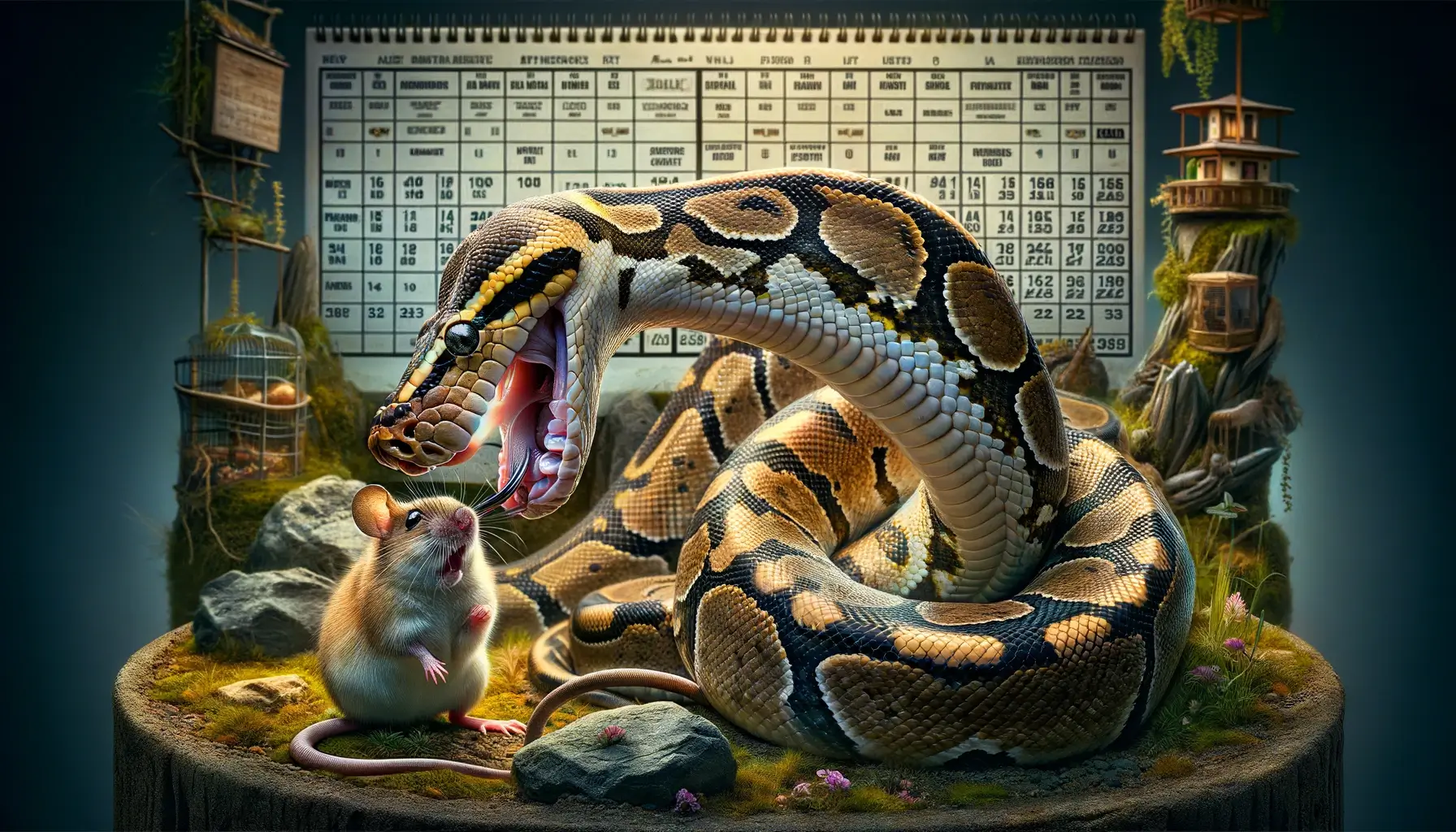Feeding your ball python is not as simple as feeding a bird; it’s a whole different kettle of fish. You’ve probably asked, “How often should I feed my ball python?” The truth about feeding these fascinating creatures might surprise you. It’s not about a set schedule but understanding their unique dietary needs and behaviours. Let’s uncover this mystery and ensure your pet python gets the nutrition it needs to thrive. Stay tuned; there’s more to this than meets the eye.
Understanding Ball Python Dietary Needs
To properly care for your ball python, it’s crucial to comprehend their unique dietary needs, rooted in their natural behaviours and physiological necessities. The question, ‘How often should I feed my ball python,’ is common, and the answer is not one-size-fits-all.
Your python’s age significantly influences its dietary needs. For instance, ‘How often should I feed my baby ball python’ differs from the feeding frequency of an adult. Baby pythons require a meal every five to seven days, while adults can go for one to two weeks without eating. This difference is due to their growth and metabolic rates.
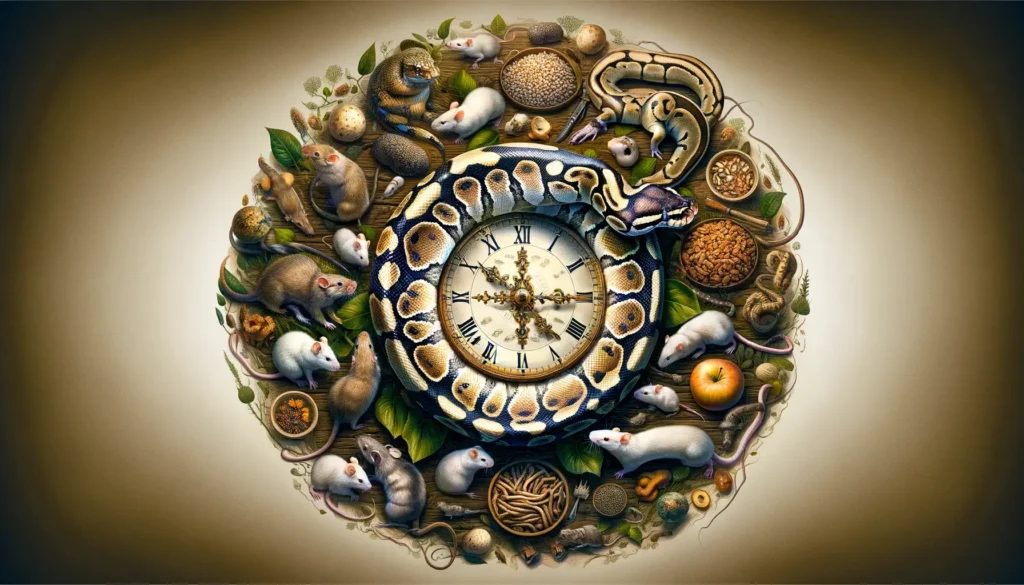
‘How often should I feed my juvenile ball python?’ you may ask. Juveniles in their growth phase require feeding every seven to ten days.
Now, you may wonder, ‘How much and how often should I feed my ball python? The meal size should correspond to the size of the python, considering its age and health. Typically, one appropriately sized rodent per meal suffices.
Feeding Frequencies for Baby Pythons
When it comes to feeding your baby python, you’ll need to provide them with a meal every five to seven days due to their high growth and metabolic rates. This frequency ensures they receive the necessary nutrients for their developing bodies. When asking yourself, you must know this requirement: “How often should I feed my year-old ball python?”
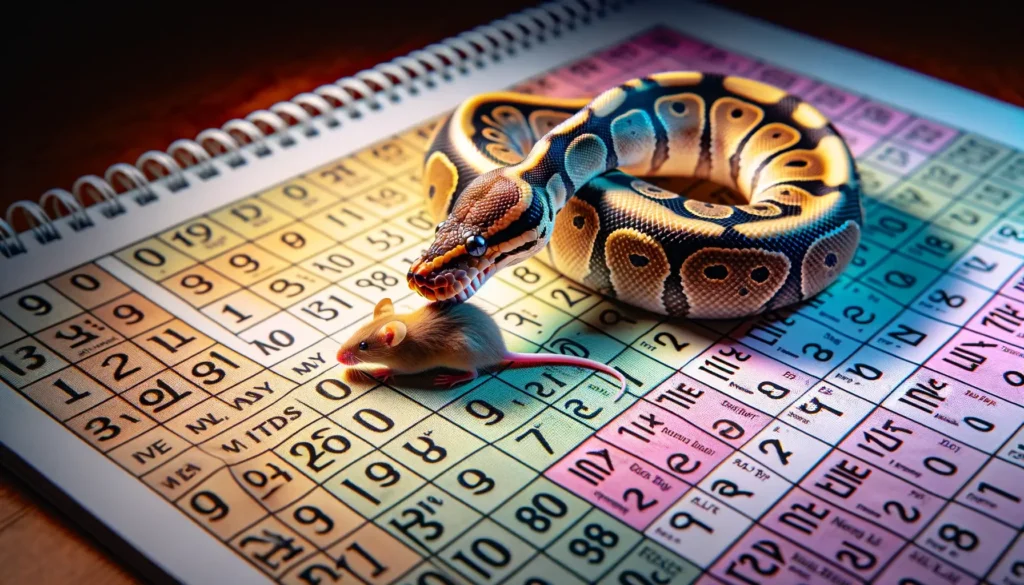
However, as your python grows, feeding intervals may vary. It’s crucial to pay attention to their appetite and behaviour. This will help you adjust their feeding schedule accordingly. Here are a few factors to consider:
Size of the meal: Larger meals may mean longer intervals between feedings.
Activity level: More active pythons may require more frequent feedings.
Health status: Ill or stressed pythons may not eat as often.
Seasonal changes: Pythons often eat less during certain times of the year.
In the case of a hatchling, you might wonder, “How often should I feed my hatchling ball python?” Hatchlings are typically fed every five days due to their rapid growth. Remember, the goal is a healthy, active, and growing python. Your attention to their feeding frequency plays a significant role in achieving this.
Appropriate Feeding for Juvenile Ball Pythons
As your ball python transitions into its juvenile stage, adjusting its diet to meet its changing nutritional needs is essential. A juvenile ball python, typically aged between 1 to 3 years, requires a steady diet of appropriate prey, primarily mice or small rats.
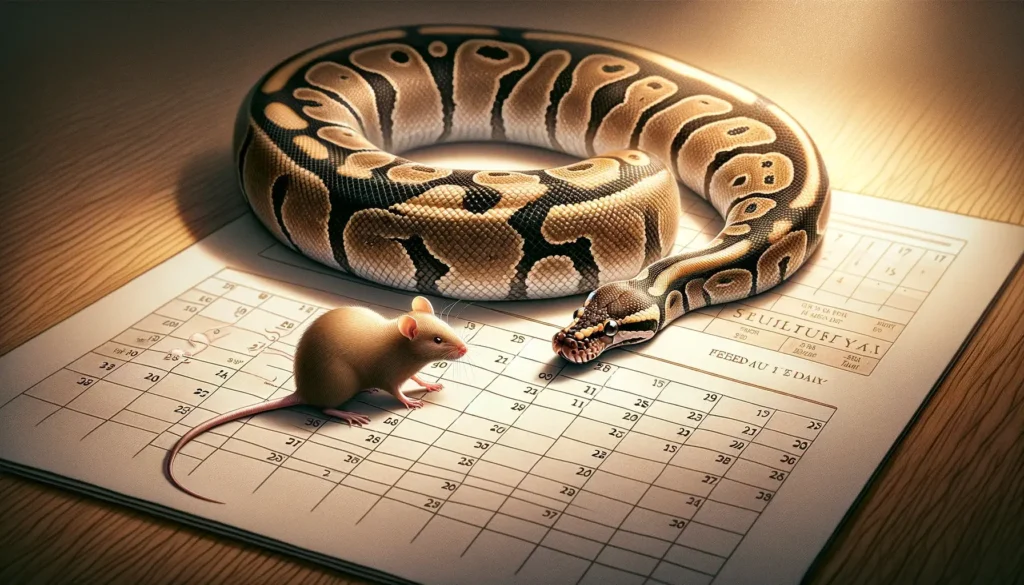
You should aim to feed your python every 7-10 days, providing meals roughly the same size as the widest part of their body. This is key in preventing overfeeding, which can lead to obesity and other health complications. It’s important to remember that pythons don’t need to eat daily, unlike mammals. Their metabolism is slower, making it easier for them to spend longer between meals.
Feeding should always be a controlled and calm experience. Avoid feeding your python by hand, which can lead to accidental bites. Instead, use tongs or a similar tool to present the food. If your python doesn’t eat, don’t panic. It’s common for them to refuse food during shedding or times of stress.
Adult Ball Python Feeding Guide
Moving from juvenile to adulthood, your ball python’s feeding requirements will change significantly. As an adult, your snake’s metabolism slows down, reducing the feeding frequency compared to their younger counterparts. Adult ball pythons typically need to be fed every 10-14 days, although this can vary depending on their overall health, activity level, and body size.
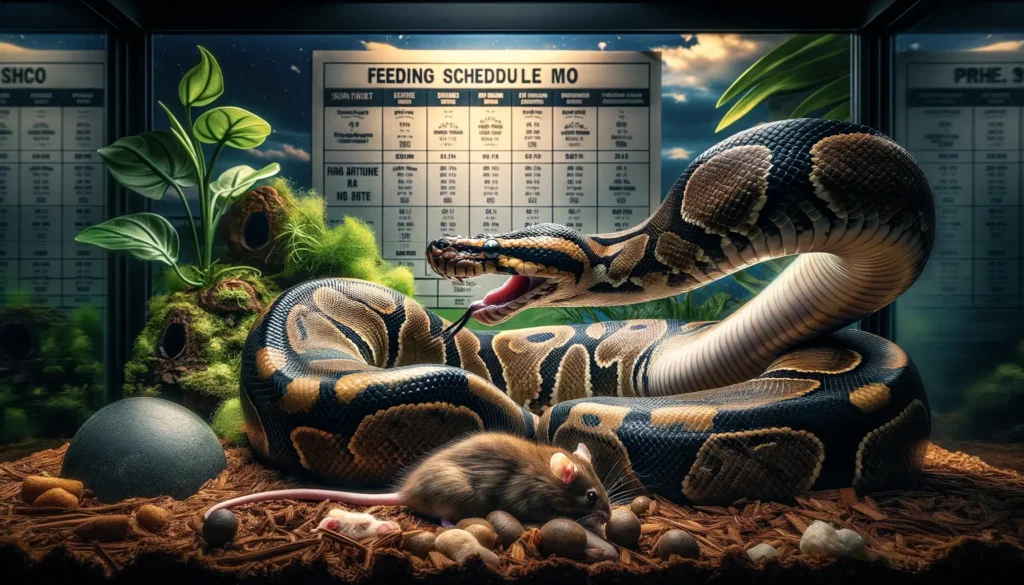
Here are some crucial pointers to consider when feeding your adult ball python:
Always offer pre-killed prey. Live rodents can harm your snake.
The prey size should be comparable to the largest part of your python’s body.
Monitor your snake’s weight and body condition regularly. Overfeeding can lead to obesity, a common issue among captive snakes.
Remember, every snake is unique. What works for one might not work for another. Adjust feeding schedules as necessary based on your pet’s individual needs.
Feeding your ball python properly requires carefully balancing the right food, portion size, and feeding frequency. Following these guidelines ensures your snake maintains a healthy weight and lives a long, happy life.
Common Misconceptions About Python Feeding
Despite the information available, several misconceptions persist about feeding ball pythons, leading to misguided practices that adversely affect your pet’s health. One common fallacy is that ball pythons need to be eaten every day. In reality, feeding them too frequently can lead to obesity and health complications. While they’re opportunistic eaters in the wild, mimicking this pattern in captivity is unnecessary. A well-balanced diet once a week is typically sufficient.
Another misbelief is that larger or more frequent meals will accelerate your python’s growth. However, rapid growth often leads to physical issues like fatty liver disease. What’s important isn’t the meal’s size but the food’s quality and appropriateness.
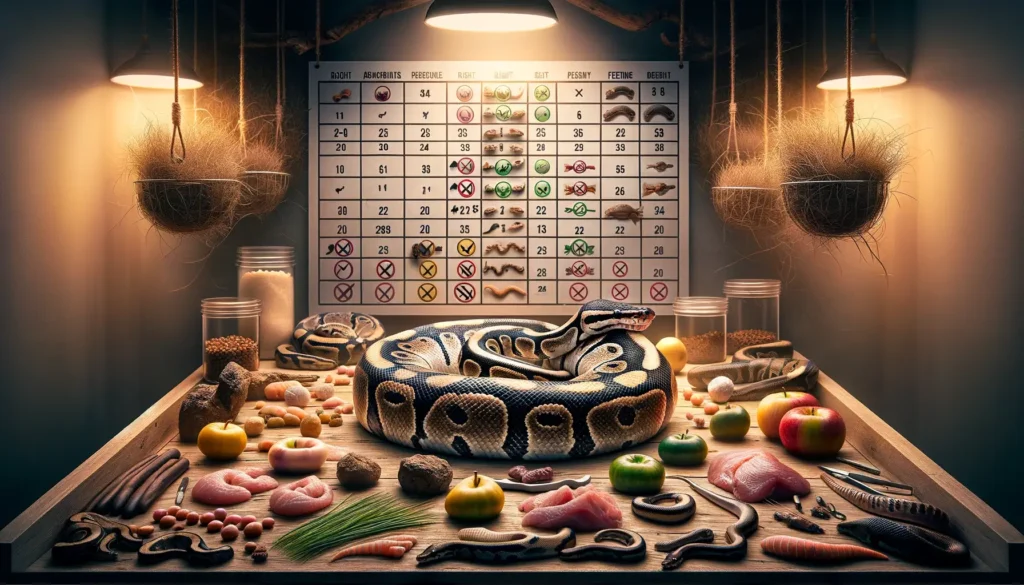
You may also be under the impression that feeding live prey is the only option. While live prey engages the python’s hunting instincts, pre-killed or frozen thawed prey is a safer and more humane alternative. Live prey can injure your python, and there’s also the risk of disease transmission.
In short, don’t let misconceptions override scientific knowledge and good judgment when feeding your pet python.
Tips for Healthy Python Feeding Practices
Building upon these common misconceptions, let’s now explore some proven strategies and tips for feeding your ball python that will promote its health and longevity. Developing a feeding schedule that aligns with your snake’s natural eating habits is crucial. Here are some tips for creating an optimal feeding regime:
Feed your python every 1-2 weeks: Overfeeding can lead to obesity, which is detrimental to your python’s health. Stick to a regular feeding schedule, and don’t be tempted to feed your snake more frequently than necessary.
Monitor your python’s weight: Regular weight checks will help determine if your snake is eating too much. Adjust your feeding schedule accordingly.
Offer a variety of prey: Ball pythons are carnivorous. Offering a mix of mice, rats, and chicks will ensure your snake gets a balanced diet.
Always provide fresh water: Ball pythons drink a lot of water. Always ensure fresh, clean water is available in your snake’s enclosure.

